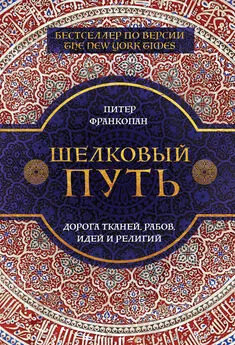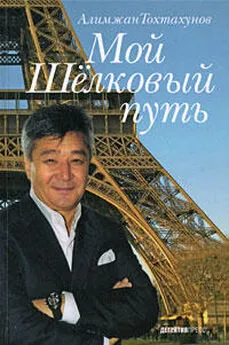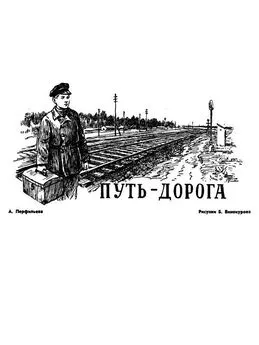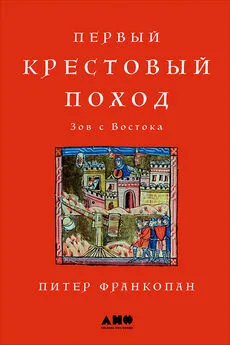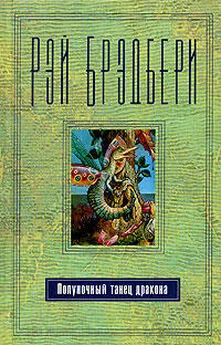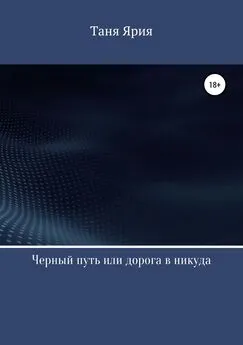Питер Франкопан - Шелковый путь. Дорога тканей, рабов, идей и религий
- Название:Шелковый путь. Дорога тканей, рабов, идей и религий
- Автор:
- Жанр:
- Издательство:Литагент 5 редакция
- Год:2017
- Город:Москва
- ISBN:978-5-699-95706-4
- Рейтинг:
- Избранное:Добавить в избранное
-
Отзывы:
-
Ваша оценка:
Питер Франкопан - Шелковый путь. Дорога тканей, рабов, идей и религий краткое содержание
Вы увидите, что история развивалась совсем не так, как мы привыкли изучать в школе. Так, столетия назад интеллектуальные центры мира, «Оксфорды» и «Кембриджи», «Гарварды» и «Йели», находились не в Европе, а в городах Средней Азии, куда и съезжалась вся просвещенная молодежь в поисках успеха.
Шелковый путь. Дорога тканей, рабов, идей и религий - читать онлайн бесплатно ознакомительный отрывок
Интервал:
Закладка:
‘Rivals doubt Carter will retain poll gains after Iran crisis’, Washington Post , 17 December 1979. См. здесь C. Emery, ‘The Transatlantic and Cold War Dynamics of Iran Sanctions, 1979–1980’, Cold War History 10.3 (2010), рр. 374–376.
1939
‘Text of Khomeini speech’, 20 November 1979, NSC memo to President Carter, цитируется по Emery, ‘Iran Sanctions’, р. 374.
1940
Там же.
1941
Там же, р. 375.
1942
‘The Hostage Situation’, Memo from the Director of Central Intelligence, 9 January 1980, цитируется по Emery, ‘Iran Sanctions’, р. 380.
1943
Carter, Keeping Faith , р. 475.
1944
Там же; а также G. Sick, ‘Military Operations and Constraints’, in Christopher, American Hostages in Iran , рр. 144–172.
1945
Woodrow Wilson Center, The Origins, Conduct, and Impact of the Iran-Iraq War, 1980–1988: A Cold War International History Project Document Reader (Washington, DC, 2004).
1946
‘NSC on Afghanistan’, Fritz Ermath to Brzezinski, цитируется по Emery, ‘Iran Sanctions’, р. 379.
1947
‘The State of the Union. Address Delivered Before a Joint Session of the Congress’, 23 January 1980, р. 197.
1948
M. Bowden, Guests of the Ayatollah: The First Battle in America’s War with Militant Islam (2006), рр. 359–361.
1949
J. Kyle and J. Eidson, The Guts to Try: The Untold Story of the Iran Hostage Rescue Mission by the On-Scene Desert Commander (New York, 1990); а также Р. Ryan, The Iranian Rescue Mission: Why It Failed (Annapolis, 1985).
1950
S. Mackey, The Iranians: Persia, Islam and the Soul of a Nation (New York, 1996), р. 298.
1951
Brzezinski to Carter, 3 January 1980, in H. Brands, ‘Saddam Hussein, the United States, and the Invasion of Iran: Was There a Green Light?’, Cold War History 12.2 (2012), рр. 322–323; также см. O. Njølstad, ‘Shifting Priorities: The Persian Gulf in US Strategic Planning in the Carter Years’, Cold War History 4.3 (2004), рр. 30–38.
1952
R. Takeyh, ‘The Iran-Iraq War: A Reassessment’, Middle East Journal 64 (2010), р. 367.
1953
A. Bani-Sadr, My Turn to Speak: Iran, the Revolution and Secret Deals with the US (Washington, DC, 1991), рр. 13, 70–71; D. Hiro, Longest War: The Iran-Iraq Military Conflict (New York, 1991), рр. 71–72; S. Fayazmanesh, The United States and Iran: Sanctions, Wars and the Policy of Dual Containment (New York, 2008), рр. 16–17.
1954
Brands, ‘Saddam Hussein, the United States, and the Invasion of Iran’, рр. 321–337.
1955
K. Woods and M. Stout, ‘New Sources for the Study of Iraqi Intelligence during the Saddam Era’, Intelligence and National Security 25.4 (2010), р. 558.
1956
Transcript of a Meeting between Saddam Hussein and his Commanding Officers at the Armed Forces General Command’, 22 November 1980, цитируется по H. Brands and D. Palkki, ‘Saddam Hussein, Israel, and the Bomb: Nuclear Alarmism Justified?’, International Security 36.1 (2011), рр. 145–146.
1957
‘Meeting between Saddam Hussein and High-Ranking Officials’, 16 September 1980, in K. Woods, D. Palkki and M. Stout (eds), The Saddam Tapes: The Inner Workings of a Tyrant’s Regime (Cambridge, 2011), р. 134.
1958
Цитируется по Brands and Palkki, ‘Saddam, Israel, and the Bomb’, р. 155.
1959
‘President Saddam Hussein Meets with Iraqi Officials to Discuss Political Issues’, November 1979, in Woods, Palkki and Stout, Saddam Tapes , р. 22.
1960
Цитируется по Brands, ‘Saddam Hussein, the United States, and the Invasion of Iran’, р. 331. О параноидальных взглядах Саддама см. K. Woods, J. Lacey and W. Murray, ‘Saddam’s Delusions: The View from the Inside’, Foreign Affairs 85.3 (2006), рр. 2–27.
1961
J. Parker, Persian Dreams: Moscow and Teheran since the Fall of the Shah (Washington, DC, 2009), рр. 6–10.
1962
Brands, ‘Saddam Hussein, the United States, and the Invasion of Iran’, р. 331.
1963
O. Smolansky and B. Smolansky, The USSR and Iraq: The Soviet Quest for Influence (Durham, NC, 1991), рр. 230–234.
1964
‘Military Intelligence Report about Iran’, 1 July 1980, цитируется по Brands, ‘Saddam Hussein, the United States, and the Invasion of Iran’, р. 334; а также H. Brands, ‘Why Did Saddam Hussein Invade Iran? New Evidence on Motives, Complexity, and the Israel Factor’, Journal of Military History 75 (2011), рр. 861–865; H. Brands, ‘Saddam and Israel: What Do the New Iraqi Records Reveal?’, Diplomacy & Statecraft 22.3 (2011), рр. 500–520.
1965
Brands, ‘Saddam Hussein, the United States, and the Invasion of Iran’, р. 323.
1966
Sick, All Fall Down, рр. 313–314; J. Dumbrell, The Carter Presidency: A Re-Evaluation (Manchester, 2005), р. 171.
1967
Brzezinski, Power and Principle, р. 504.
1968
J.-M. Xaviere (tr.), Sayings of the Ayatollah Khomeini: Political, Philosophical, Social and Religious: Extracts from Three Major Works by the Ayatollah (New York, 1980), рр. 8–9.
1969
E. Abrahamian, Khomeinism: Essays on the Islamic Republic (London, 1989), р. 51.
1970
T. Parsi, The Treacherous Alliance: The Secret Dealings of Iran, Israel and the United States (New Haven, 2007), р. 107.
1971
R. Claire, Raid on the Sun: Inside Israel’s Secret Campaign that Denied Saddam Hussein the Bomb (New York, 2004).
1972
Woods, Palkki and Stout, Saddam Tapes , р. 79.
1973
‘Implications of Iran’s Victory over Iraq’, 8 June 1982, National Security Archive.
1974
The Times , 14 July 1982.
1975
G. Shultz, Turmoil and Triumph: Diplomacy, Power and the Victory of the American Deal (New York, 1993), р. 235.
1976
B. Jentleson, Friends Like These: Reagan, Bush, and Saddam, 1982–1990 (New York, 1994), р. 35; J. Hiltermann, A Poisonous Affair: America, Iraq and the Gassing of Halabja (Cambridge, 2007), рр. 42–44.
1977
‘Talking Points for Amb. Rumsfeld’s Meeting with Tariq Aziz and Saddam Hussein’, 14 December 1983, цитируется по B. Gibson, Covert Relationship: American Foreign Policy, Intelligence and the Iran-Iraq War, 1980–1988 (Santa Barbara, 2010), рр. 111–112.
1978
Цитируется по Gibson, Covert Relationship , р. 113.
1979
H. Brands and D. Palkki, ‘Conspiring Bastards: Saddam Hussein’s Strategic View of the United States’, Diplomatic History 36.3 (2012), рр. 625–659.
1980
‘Talking Points for Ambassador Rumsfeld’s Meeting with Tariq Aziz and Saddam Hussein’, 4 December 1983, cited by Gibson, Covert Relationship , р. 111.
1981
Gibson, Covert Relationship , рр. 113–118.
1982
Admiral Howe to Secretary of State, ‘Iraqi Use of Chemical Weapons’, 1 November 1983, цитируется по Gibson, Covert Relationship , р. 107.
1983
Цитируется по Z. Fredman, ‘Shoring up Iraq, 1983 to 1990: Washington and the Chemical Weapons Controversy’, Diplomacy & Statecraft 23.3 (2012), р. 538.
1984
Совет безопасности ООН принял Резолюцию – 540, призывающую прекратить военные операции, но не упоминавшую химическое оружие. По словам одного высокопоставленного представителя ООН, когда генеральный секретарь Хавьер Перес де Куэльяр поднял вопрос о рассмотрении этого вопроса, «он столкнулся с антарктически холодной атмосферой; Совет безопасности ничего не хотел слышать». Hiltermann, A Poisonous Affair , р. 58. Также см. здесь Gibson, Covert Relationship , рр. 108–109.
1985
Fredman, ‘Shoring up Iraq’, р. 539.
1986
‘Iraqi Use of Chemical Weapons’, in Gibson, Covert Relationship , р. 108.
1987
Fredman, ‘Shoring Up Iraq’, р. 542.
1988
A. Neier, ‘Human Rights in the Reagan Era: Acceptance by Principle’, Annals of the American Academy of Political and Social Science 506.1 (1989), рр. 30–41.
1989
Braithwaite, Afgantsy , рр. 201–202, и M. Bearden and J. Risen, Afghanistan: The Main Enemy (New York, 2003), рр. 227, 333–336.
1990
Braithwaite, Afgantsy , р. 214; Гай Д., Снегирев В. Вторжение. – М., 1991. – С. 139.
1991
Braithwaite, Afgantsy , рр. 228–229.
1992
Там же, р. 223.
1993
J. Hershberg, ‘The War in Afghanistan and the Iran-Contra Affair: Missing Links?’, Cold War History 3.3 (2003), р. 27.
1994
National Security Decision Directive 166, 27 March 1985, National Security Archive.
1995
Hershberg, ‘The War in Afghanistan and the Iran-Contra Affair’, 28; а также H. Teicher and G. Teicher, Twin Pillars to Desert Storm: America’s Flawed Vision in the Middle East from Nixon to Bush (New York, 1993), рр. 325–326.
1996
Braithwaite, Afgantsy , р. 215.
1997
Coll, Ghost Wars , рр. 161–162, 71–88.
1998
Beijing Review , 7 January 1980.
1999
M. Malik, Assessing China’s Tactical Gains and Strategic Losses Post-September 11 (Carlisle Barracks, 2002), цитируется по S. Mahmud Ali, US – China Cold War Collaboration: 1971–1989 (Abingdon, 2005), р. 177.
Читать дальшеИнтервал:
Закладка:
